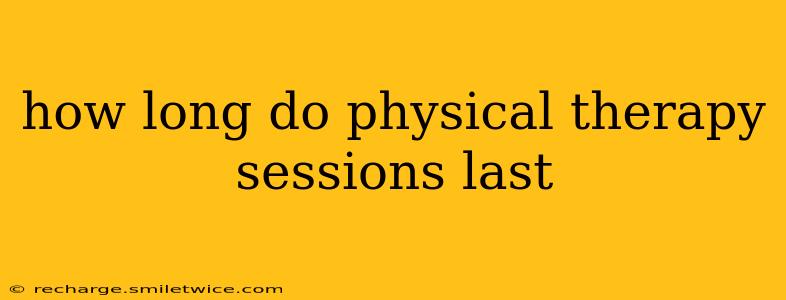The duration of a physical therapy session is highly variable and depends on several factors. There's no one-size-fits-all answer, but understanding these influencing factors will help you manage your expectations and get the most out of your therapy.
What Determines the Length of a Physical Therapy Session?
Several key elements influence how long your physical therapy appointments will be:
-
Your Specific Condition: A simple injury like a minor ankle sprain might require shorter sessions focused on specific exercises and stretches. More complex conditions, such as post-surgical rehabilitation or chronic pain management, often necessitate longer sessions to address multiple areas and implement a comprehensive treatment plan.
-
The Type of Therapy: Different therapeutic approaches require varying amounts of time. Manual therapy techniques, for example, might take longer than sessions focused primarily on exercise. Aquatic therapy, which involves the use of water for rehabilitation, often takes longer to set up and transition between exercises.
-
Your Therapist's Approach: Individual therapists may have different styles and pacing. Some therapists might prefer shorter, more frequent sessions, while others might opt for longer, less frequent appointments. This also depends on their caseload and scheduling availability.
-
Your Progress and Goals: As you progress through therapy, the duration of your sessions might adjust. Initially, longer sessions might be needed to establish a baseline and develop a comprehensive treatment plan. As you improve and regain function, the sessions might become shorter and focus more on maintenance and advanced exercises.
-
Your Individual Needs and Tolerance: Your personal physical stamina and ability to tolerate intense treatment also play a significant role. If you tire easily, shorter sessions might be more beneficial to avoid overexertion and potential setbacks.
How Long Are Physical Therapy Sessions Typically?
While session lengths can vary widely, a typical physical therapy session lasts between 30 and 60 minutes. However, it's not uncommon to have shorter or longer sessions depending on the factors mentioned above. Some initial evaluations might even be longer than an hour.
What Happens During a Physical Therapy Session?
A physical therapy session typically includes a variety of activities tailored to your specific needs. These may include:
- Evaluation and Assessment: This initial step involves your therapist assessing your condition, reviewing your medical history, and setting treatment goals.
- Therapeutic Exercises: These are designed to improve strength, flexibility, range of motion, and overall function.
- Manual Therapy: This involves hands-on techniques to improve joint mobility, reduce pain, and facilitate healing.
- Modalities: These may include heat, ice, ultrasound, or electrical stimulation to manage pain and inflammation.
- Patient Education: Your therapist will educate you about your condition, treatment plan, and home exercise program.
What if I Need Longer Sessions?
If you feel that your current session length isn't sufficient to address your needs, don't hesitate to discuss it with your physical therapist. They can adjust the schedule and duration of your sessions based on your progress and requirements. Open communication is key to successful physical therapy.
How Many Sessions Will I Need?
The number of physical therapy sessions required varies greatly depending on your condition, your response to treatment, and your goals. Some individuals might only need a few sessions, while others may require several weeks or even months of treatment. Your therapist will provide a better estimate after your initial evaluation and as your treatment progresses.
Remember, the goal of physical therapy is to help you regain function and improve your quality of life. The duration of your sessions is a collaborative decision between you and your therapist, designed to optimize your recovery.
